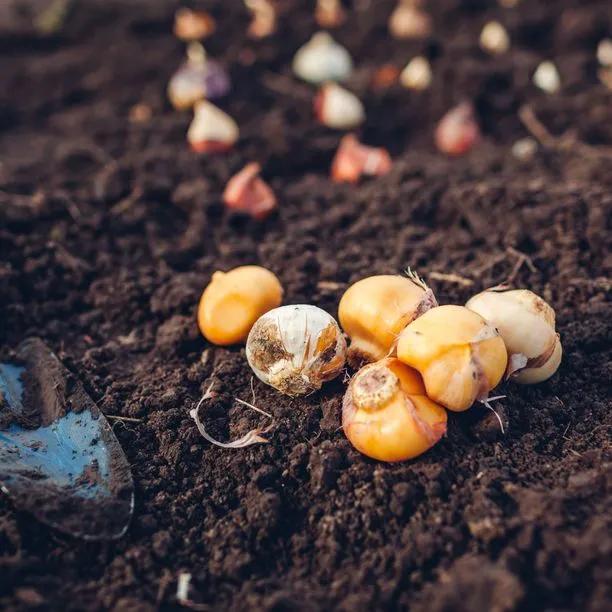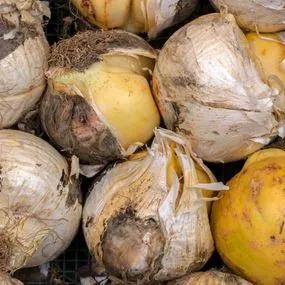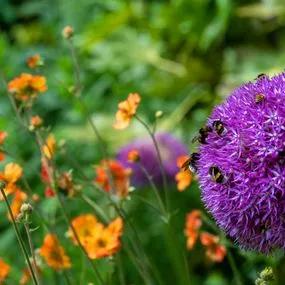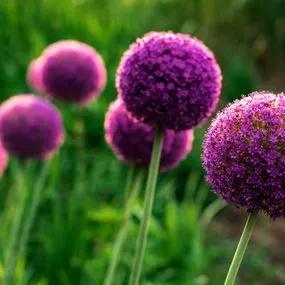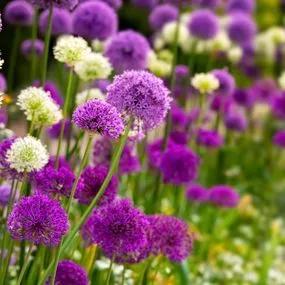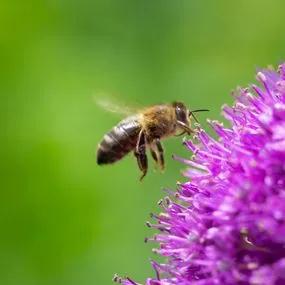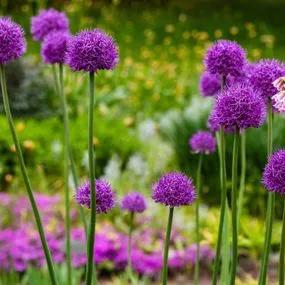Giant Onion Allium Bulbs
Honest Delivery Prices- Colour: Purple
- Height: 120-140 cms
- Scent: Mild
- Flowering: May/June
- Bulb Size: 18/20 cms
- Planting Depth: 4 x the bulb height
- Planting Months: September - December
- RHS Recommendation for Bees etc
Recommended extras
Description
Allium Giganteum
This is the largest allium grown in the UK which also makes it the biggest of the allium bulbs for sale on this site. Allium giganteum lives up to its name; the violet/mauve flowerhead is as large as a small melon and sits atop a strong stem of up to 130-150 cm tall. The long strappy leaves are all at the base of the stem and will have mostly died back when the flowers open. The seed head that follows changes in colour through pink to a light brown - almost straw - colour. The heads dry very well and are ideal for dried flower arrangements. This is an imposing allium, but not as showy as Purple Sensation or Purple Rain (ideal for Prince fans).
Allium giganteum hails from mountainous Central Asia where it enjoys the excellent drainage found in the foothills and lower mountain slopes. This explains its need for sun and excellent drainage in the garden. In the garden, it is a plant that prefers a well drained and sunny situation.
- Colour: Mauve/violet
- Height: 120-140 cm
- Scent: Faint
- Flowering: May/June
- Bulb Size: 18/20 cm
- Planting Depth: 4 times the height of the bulb
- Planting Months: September - December
Holds the RHS "Plants for Pollinators" badge, meaning that it is great for bees, butterflies, and other insects that depend on flowers with a good supply of nectar.
Planting Instructions
Plant alliums such as Allium giganteum in borders and containers. This is not really a bulb for naturalising as they tend to do best where the soil is rich and can be improved with a spring mulch.
The principal requirement is decent drainage - alliums hate permanently wet soil and they grow best in a sunny spot.
Space them quite widely when planting - these allium bulbs can be very big indeed and a clump will occupy a fair bit of space. The planting hole should be about four times deeper than the bulb is tall. The pointy end is the top...
The spent flower heads are very handsome and can be left on the plant or cut to make a dried flower arrangement. Allow the foliage to die back naturally before removing.
By all means apply a high potash fertiliser during the growing season to help bulk up the bulb for next year. Lift and divide clumps of alliums if flowering is poor.

